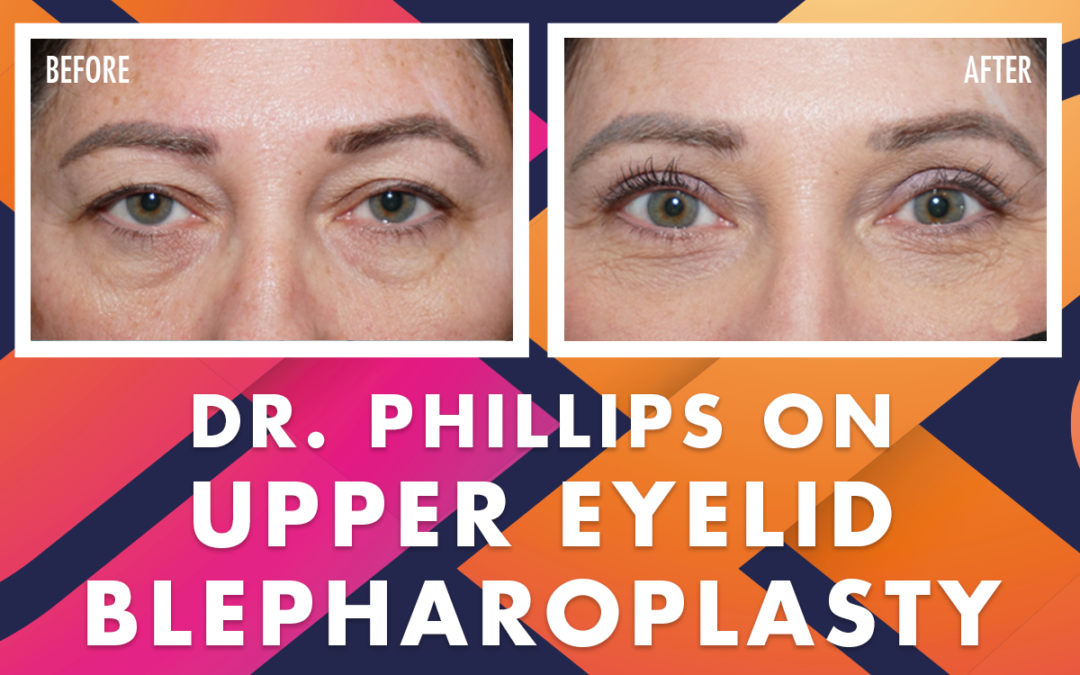As we age, our eyes often show the first signs of advancing years. The upper eyelid skin loses elasticity and begins to sag. This can not only distort the natural eyelid contour making your eyes look more tired and makeup wear more difficult, but it can also create a hood over your eyelid in advanced cases. A blepharoplasty, as also employed by over 100,000 men and women yearly, can be performed to rejuvenate your upper eyelids. This minimally invasive surgery can be used to turn the clock back and restore a youthful look to the focal point of your face.
Dr. Phillips, an ophthalmic plastic surgeon, is a specialist in cosmetic and reconstructive surgery around the eyes. For her, an upper eyelid blepharoplasty is more than just a cookie-cutter removal of excess skin. Prior to any surgery, she studies the eyelid carefully, considering the function and position of the eyelid, the underlying eye, as well as the position of surrounding tissues. In some cases, a droopy eyelid is also repaired to lift and rejuvenate the eyelid. Eyelid fat may also be contoured or repositioned at the time of the upper eyelid blepharoplasty. No matter the plan, it will be discussed in detail by Dr. Phillips prior to any surgery.
At the time of surgery, Dr. Phillips will mark the eyelid skin. She marks the eyelid while the patient is awake and not anesthetized, to ensure she considers the tissue thickness, mobility, and behavior. Her final markings will be done in the procedure room to maximize post-operative symmetry. Once the surgery is completed, the patient will have a suture in place to help the tissue heal over the next week.
Post-operatively, every patient should expect bruising and swelling. Many factors play a role in a patient’s degree of swelling and bruising, but certain actions post-operatively can help. By avoiding blood thinning medications for one week prior to surgery, keeping the head elevated, avoiding side sleeping, and using regular ice cold compresses, a patient is doing what they can to minimize bruising and swelling after surgery. Some patients may seek additional ways to reduce bruising (Arnica and raw pineapple consumption), but Dr. Phillips does not endorse those personally as benefits vary.
A patient will have one week of reduced activity after surgery. Once the sutures are removed at the one week post-operative visit, a patient can ease back into normal. Most patients can resume makeup wear at 10-14 days post-operatively. The eyelid will heal over the next month, but many patients will see signs of continued healing over the next three to six months. It is important to protect the eyelids from sun exposure and harsh products during that time, so as to not prolong redness and inflammation.
An upper eyelid blepharoplasty, both for cosmetic and functional reasons, is one of the most common surgeries Dr. Phillips performs. For a rejuvenated appearance with brighter eyes, schedule your consult today! Contact us at 228-231-9477 for a consultation.

